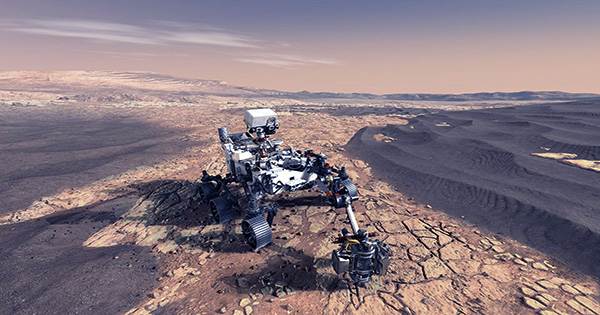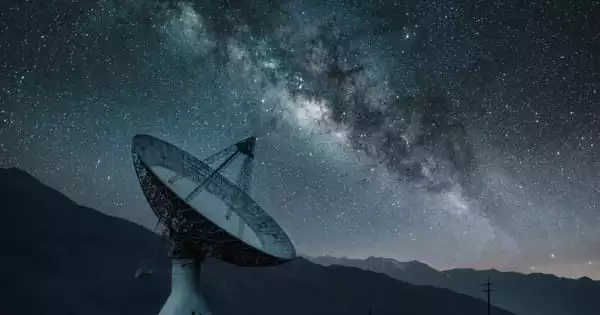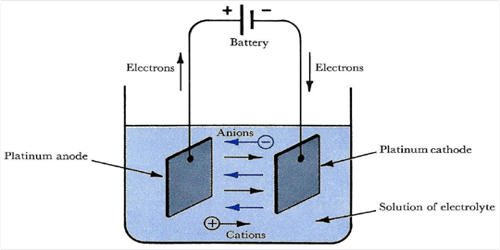Researchers from Leicester University have identified a hitherto unseen mechanism that powers massive planetary aurorae at Saturn.
Saturn stands out among the planets that have been studied so far in that some of its aurorae are produced by whirling winds within its own atmosphere as opposed to only the magnetosphere that surrounds the planet.
Only strong currents from the surrounding magnetosphere may generate aurorae on any other planet that has been detected, including Earth. These are driven by either interaction with charged particles from the Sun (as at the Earth) or volcanic material erupted from a moon orbiting the planet (as at Jupiter and Saturn).
This discovery changes scientists’ understanding of planetary aurorae and answers one of the first mysteries raised by NASA’s Cassini probe, which reached Saturn in 2004: why can’t we easily measure the length of a day on the Ringed Planet?
When Cassini first arrived at Saturn, it attempted to establish the planet’s mass rotation rate which affects how long its day is by observing radio emission “pulses” from Saturn’s atmosphere.
To the great surprise of scientists conducting the tests, they discovered that the rate appeared to have altered over the 20 years since Voyager 2, another NASA-operated spacecraft, passed the planet in 1981.
Leicester PhD researcher Nahid Chowdhury is a member of the Planetary Science Group within the School of Physics and Astronomy and corresponding author for the study, published in Geophysical Research Letters. He said:
“Saturn’s internal rotation rate has to be constant, but for decades researchers have shown that numerous periodic properties related to the planet the very measurements we’ve used at other planets to understand the internal rotation rate, such as the radio emission tend to change with time. What’s more, there are also independent periodic features seen in the northern and southern hemispheres which themselves vary over the course of a season on the planet.”
“Our understanding of the physics of planetary interiors tells us the true rotation rate of the planet can’t change this quickly, so something unique and strange must be happening at Saturn. Several theories have been touted since the advent of the NASA Cassini mission trying to explain the mechanism/s behind these observed periodicities. This study represents the first detection of the fundamental driver, situated in the upper atmosphere of the planet, which goes on to generate both the observed planetary periodicities and aurorae.”
“It’s absolutely thrilling to be able to provide an answer to one of the longest standing questions in our field. This is likely to initiate some rethinking about how local atmospheric weather effects on a planet impact the creation of aurorae, not just in our own Solar System but farther afield too.”
The University of Leicester has long been involved in measuring the effects of this new discovery we’ve observed how the pulsing aurorae and the wobbling magnetic field lines stretching out into space highlight an apparently changing rotation rate. For two decades our researchers, along with the wider scientific community, have speculated about what might be driving these strange periodicities.
Dr. Tom Stallard
Astronomers and planetary scientists based at the University of Leicester led a study alongside colleagues from NASA’s Jet Propulsion Laboratory (JPL), the Japan Aerospace Exploration Agency (JAXA), and the Universities of Wisconsin-Madison, Boston, and Lancaster, plus Imperial and University Colleges, London, to resolve the decades-old question.
Over the course of a month in 2017, they charted the shifting fluxes of Saturn’s ionosphere, which is located well below the magnetosphere, and detected infrared emissions from the gas giant’s upper atmosphere using the Keck Observatory in Hawaii.
This map, when compared to the known pulse of Saturn’s radio aurorae, revealed that a sizeable amount of the planet’s aurorae are produced by the planet’s whirling weather pattern, which also accounts for the planet’s observed fluctuating rate of spin.
Given that the ionosphere’s winds have been detected to be moving between 0.3 and 3.0 kilometers per second, scientists assume the system is powered by energy from Saturn’s thermosphere.
Dr. Tom Stallard, Associate Professor in Planetary Astronomy at the University of Leicester, added:
“The University of Leicester has long been involved in measuring the effects of this new discovery we’ve observed how the pulsing aurorae and the wobbling magnetic field lines stretching out into space highlight an apparently changing rotation rate. For two decades our researchers, along with the wider scientific community, have speculated about what might be driving these strange periodicities.”
“Over the years, scientific meetings have had late-night discussions about whether the volcanic moon Enceladus might be the cause, or interactions with the thick atmosphere of the moon Titan, or perhaps interactions with Saturn’s bright rings. But recently, many researchers have focused on the possibility that it is Saturn’s upper atmosphere that causes this variability.”
“This search for a new type of aurora harks back to some of the earliest theories about Earth’s aurora. We now know that aurorae on Earth are powered by interactions with the stream of charged particles driven from the Sun. But I love that the name Aurora Borealis originates from the ‘the Dawn of the Northern Wind’. These observations have revealed that Saturn has a true Aurora Borealis the first ever aurora driven by the winds in the atmosphere of a planet.”
Dr. Kevin Baines, a JPL-Caltech-based co-author of the study and a member of the Cassini Science Team, added:
“Our study, by conclusively determining the origin of the mysterious variability in radio pulses, eliminates much of the confusion into Saturn’s bulk rotation rate and the length of the day on Saturn.”
The bulk internal rotation rate cannot be determined using the regular pulse of radio emission because of the various rotation speeds seen at Saturn. But thanks to a new technique created by Cassini scientists employing gravity-induced perturbations in Saturn’s intricate ring system, the planet’s actual rotational period, which was discovered in 2019 to be 10 hours, 33 minutes, and 38 seconds, can now be measured with the greatest degree of accuracy.
Planetary research at the University of Leicester spans the breadth of our Solar System and beyond.
Researchers from Leicester are spearheading investigations of the outer planets with the recently launched James Webb Space Telescope and are members of the Juno project, a global team of astronomers observing Saturn’s enormous neighbor Jupiter. Leicester also plays a leading role in science and instrumentation on the European Space Agency (ESA)’s Jupiter Icy Moons Explorer (JUICE), due for launch later in 2022.
This research was supported by a NASA Keck PI Data Award, administered by the NASA Exoplanet Science Institute.
















